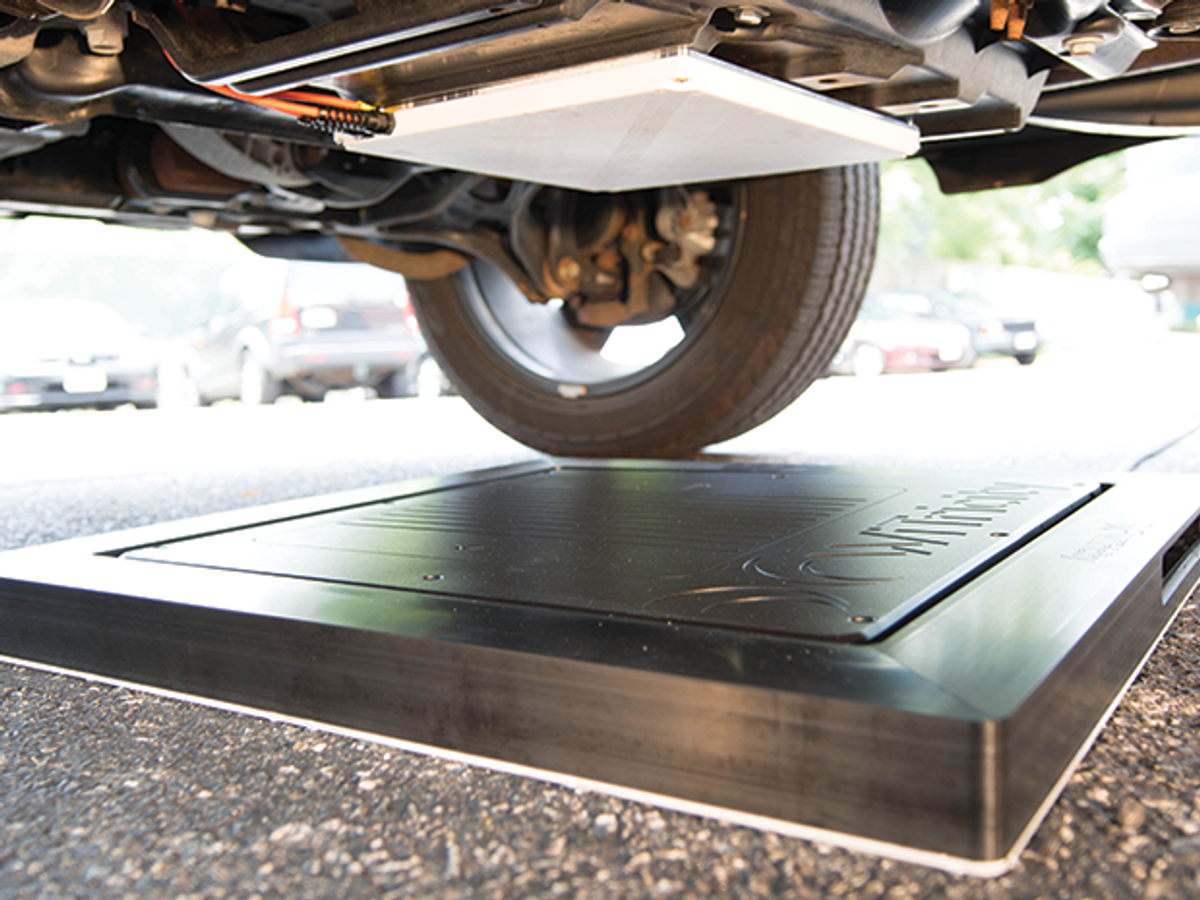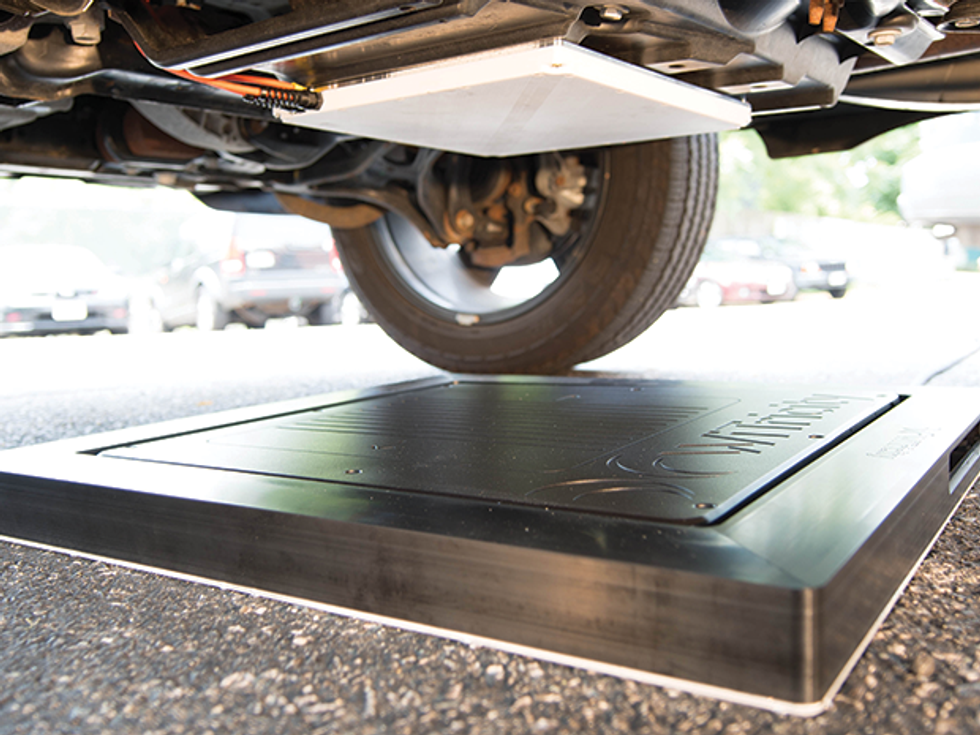Imagine coming home and dropping your phone, laptop, and Bluetooth® headset on your kitchen table so that they all recharge, simultaneously. Or driving your electric car into a garage, parking above a mat, and knowing it will be charged in the morning. Or being told by your doctor that there is a new medical implant to replace the one you wear—and the new version does not include power cords or the need to replace batteries.
Wireless power transfer is making these scenarios and other applications a reality by delivering a cordless way to charge electronic devices. WiTricity, a Watertown, MA-based company that develops wireless charging technology based on magnetic resonance, has launched the most consumer-friendly method available for the wireless transfer of electrical power. Invented at the Massachusetts Institute of Technology (MIT) by Professor Marin Soljacic and a team of researchers, WiTricity’s technology has the ability to charge multiple devices at once, over distances and through materials like wood, plastic, granite, and glass. Companies such as Toyota, Intel, and Thoratec have already licensed the technology for use in hybrid-electric vehicles, smartphones, wearable electronics, and heart pumps.
MAGNETIC RESONANCE WIDENS THE TRANSMISSION GAP
Other options for wireless energy transfer require precise device positioning on a pad or holder, very close proximity to (often resting directly on) the charging source, and the source can only charge a single device with a single coil. Now, the engineers at WiTricity have leveraged the power of magnetic resonance to rethink these limitations.
Their system, dubbed “highly resonant wireless power transfer”, relies on oscillating time-varying magnetic fields generated by alternating current passing through a coil that functions as a power source. A power amplifier connected to this source coil controls the power levels and operating frequency, driving the magnetic field levels.
A capture device, which acts as a receiver and captures the magnetic field, contains another coil tuned to the same frequency as the source. The field converts the magnetic energy back to radiofrequency alternating current in the receiver, which can then be used as a new local power source after being rectified and regulated by power electronics.
The notable difference between WiTricity’s technology and other approaches is the use of magnetic resonance. With both coils tuned to the same resonant frequency, the receiving coil is able to capture maximum power through the magnetic field with very low losses, and power can be transmitted without the source and capture device sitting next to each other or being perfectly aligned.
“One major advantage is the flexibility of motion and positioning. The receiving coil doesn’t have to be in direct contact with the device; for instance, while driving your car you could drop your phone into a cup holder positioned near the capture device, rather than arranging it on a charging pad,” explained Andre Kurs, cofounder of WiTricity. “And you can charge everything together, including electronics that have different power requirements.”
Extending the wireless range is also easy enough: resonant repeaters that each contain another circuit and coil may be placed between the source and receiver, allowing power to ‘hop’ over greater distances.
Transfer occurs effectively even with barriers (such as people and concrete walls) between the power source and the receiver.
MODELING THE ELECTROMAGNETICS OF WIRELESS POWER TRANSFER
In designing for maximum efficiency using coils with the same resonant frequency, Kurs and his team had to account for variables such as number of coil turns, diameter, and necessary power input. From the early stages of development, they relied on computer simulation to test key details, verify designs, and optimize the system. Using a COMSOL Multiphysics® software model, Kurs analyzed the electromagnetic and thermal behavior of different coil configurations, and was able to quickly validate new designs.
One challenge lay in making the technology scalable for a wide range of devices: a car, for instance, needs a different charging configuration than a smartphone. “We have such a wide range of applications, prototyping and testing is time-consuming and expensive, and design mistakes can set you back a lot—in such a competitive market, we can’t afford that,” he said. “Design validation in COMSOL® was cost-effective and time-saving and allowed us to virtually test our concepts before building the real device.”
He created simulations with different setups for each application, and included electromagnetically relevant components such as coil windings, specially shaped ferrites and metal surfaces used to guide the electromagnetic field, plates for shielding sensitive electronics, and large objects that might perturb the field, such as a car chassis.
Then he ran a multiphysics study to analyze the resulting electromagnetic and thermal performance as a function of power drawn by the devices, coil displacements, and the effects of perturbing objects.
He extracted circuit parameters from the results to guide the design of the electronics, as well as predictions of power dissipation and thermal loading on different components.
The team adjusted their designs accordingly, determining the viable range of coil displacements and power levels as a function of size, weight, and thermal constraints. “The simulation allowed us to disentangle various effects that we couldn’t isolate just by testing, like power dissipation and heat transfer,” Kurs remarked.
“The flexibility of COMSOL® was particularly useful; we built a suite of simulation apps around it that would allow any of our engineers—whether they knew how to use COMSOL® or not—to quickly test and validate designs even if they didn’t understand the entire model.”
KEEPING A SAFE DISTANCE, RIGHT UP CLOSE
Since such devices are near to or in contact with people’s bodies, electronics manufacturers must adhere to safety limits on the electromagnetic fields emitted by their products. The magnetic fields needed for WiTricity’s wireless transfer are usually fairly weak, but each new application needs be checked for compliance.
To make sure that the field levels and resulting body temperatures would meet regulations, the team ran several more COMSOL® simulations to study different body tissues in close proximity to the device. Their models calculated the electric field based on the operating frequency of the charging system, and confirmed that the results were well within FCC safety guidelines.
RETHINKING A GROWING INDUSTRY FOR WIRELESS CHARGING
Witricity’s designs based on magnetic resonance are a major improvement over other wireless charging methods, allowing reliable wireless power transfer in a flexible, consumer-friendly product. Thanks to their simulation work in COMSOL Multiphysics®, the WiTricity team optimized their designs for better efficiency and longer ranges before building costly prototypes.
In addition to being frontrunners in game-changing wireless power transfer technology, WiTricity is on the board of the Alliance for Wireless Power (A4WP), an organization dedicated to building a “global wireless ecosystem” and creating standards for wireless charging. Another board member, Intel, has licensed WiTricity’s technology to develop a wireless desktop system. The A4WP is an innovative group comprising leading companies that are ushering in a new way of thinking about wireless power: they are imagining a future where every day surfaces—desks, cup holders, and even your kitchen countertop— become zones for charging the electronic devices we depend on so much.




